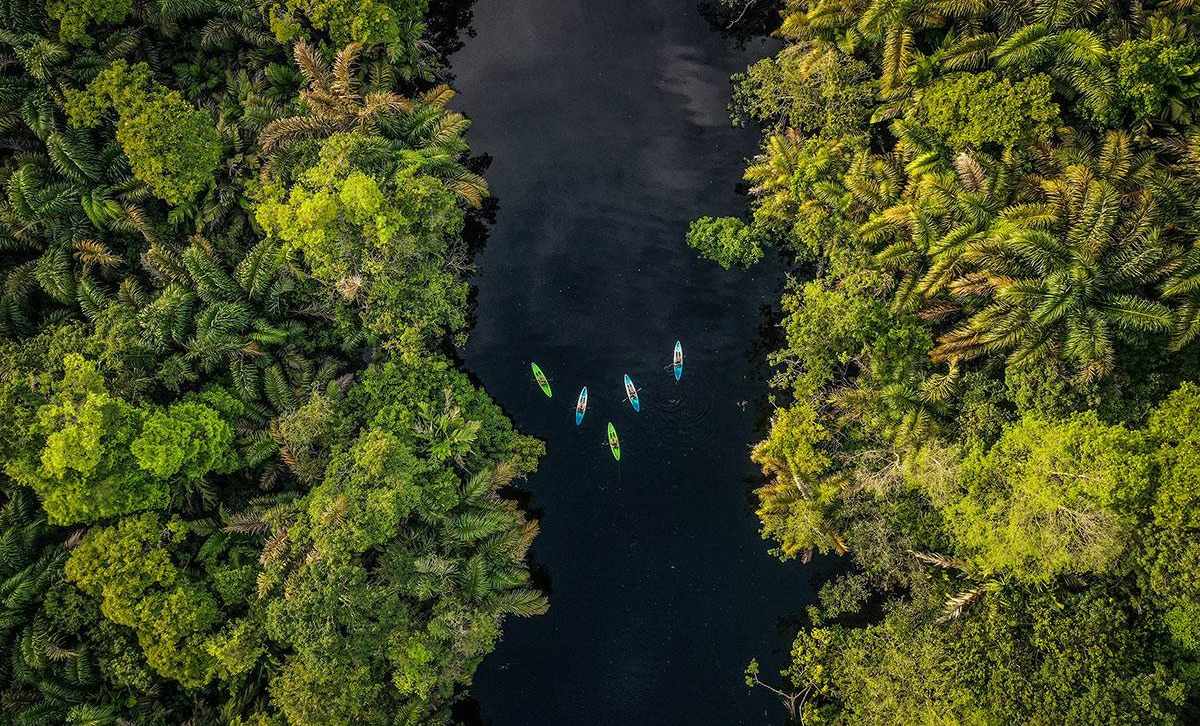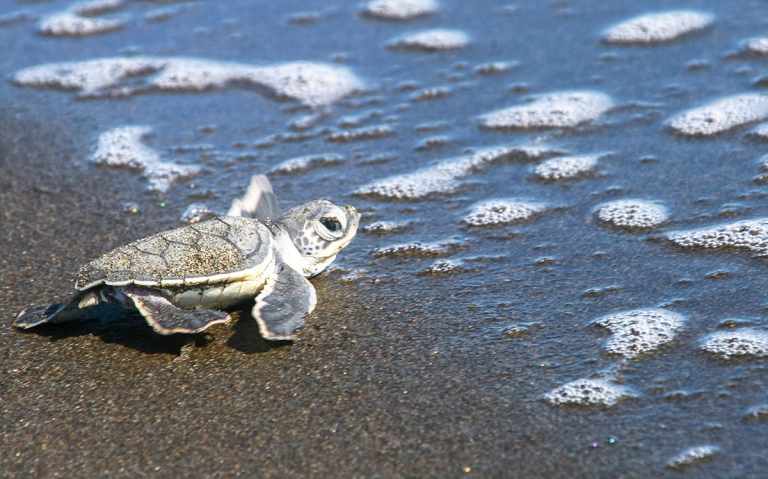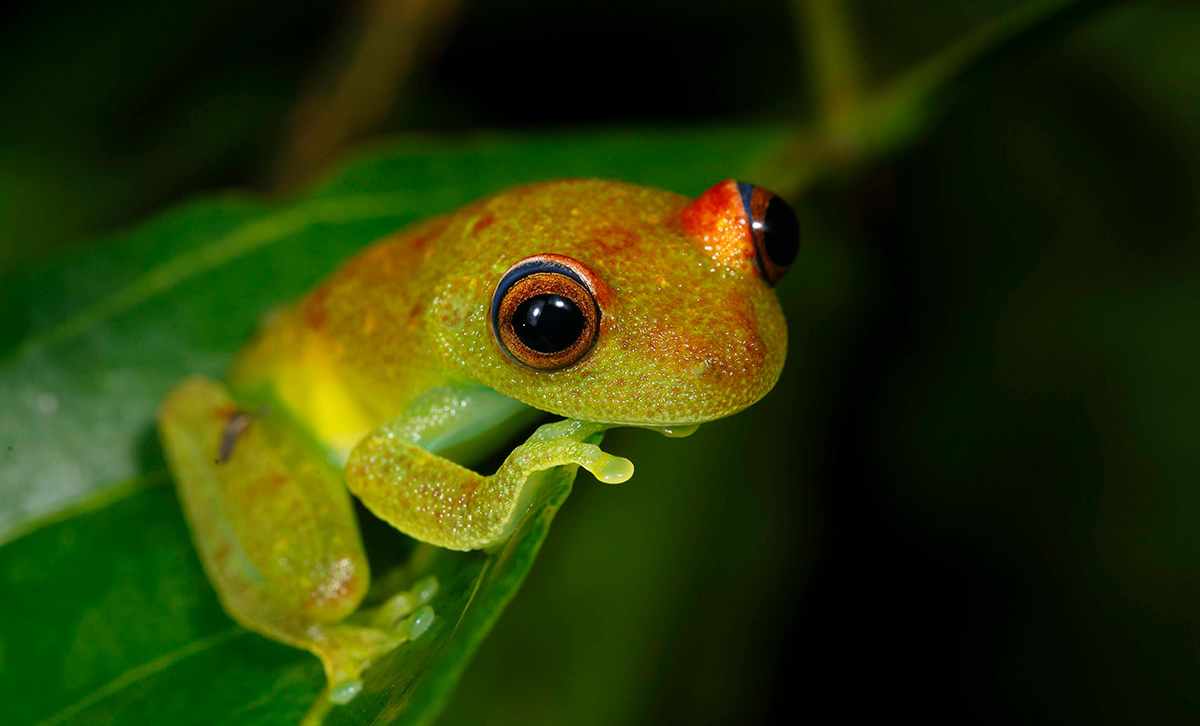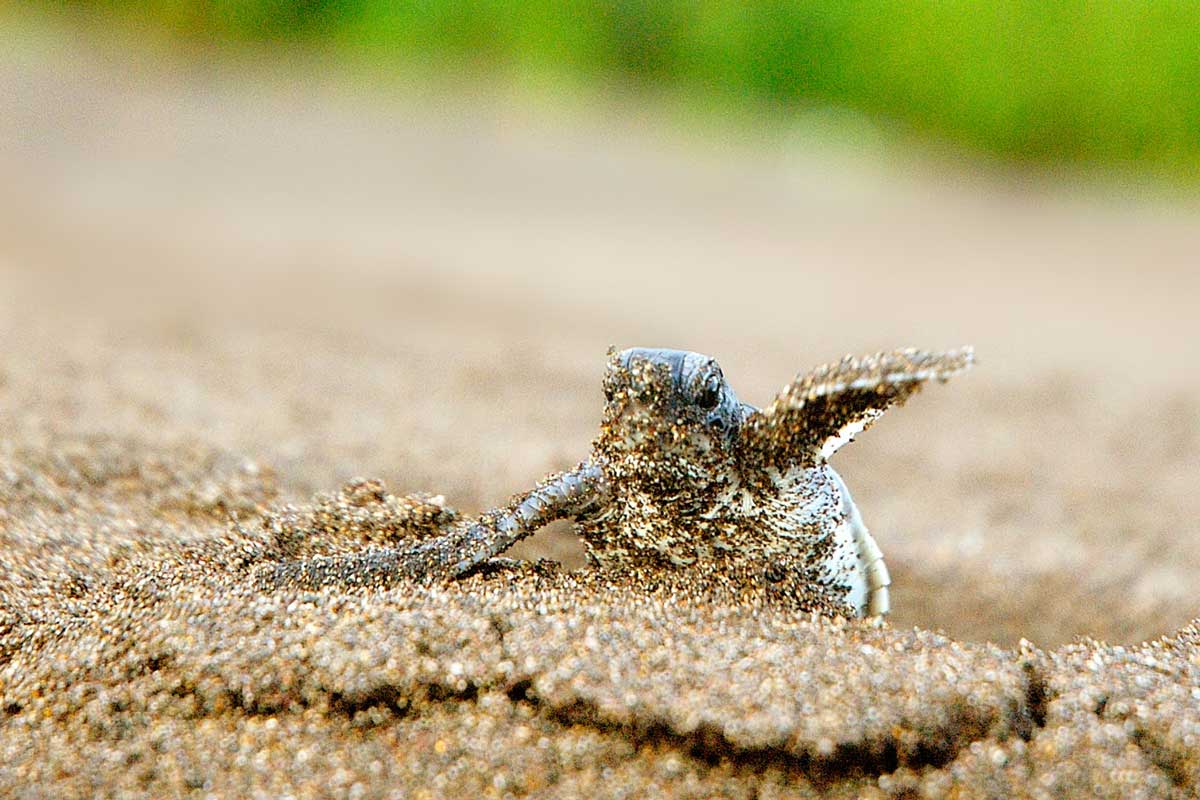Tortuguero National Park
Tortuguero National Park is a remarkable and remote national park in the northeast of Costa Rica only accessible by boat or small planes. Tortuguero National Park is famed for being home to a massive amount of biodiversity and being a dream destination for nature lovers. This is largely due to the range of habitats that exists within the park, including mangroves and tropical rainforests, as well as aquatic habitats like beaches, canals, wetlands and lagoons. In addition to the sea turtles that this area is named for, a few of the other animals commonly spotted in the park include Spider Monkeys, Spectacled Caiman in the river, both river turtles, and beautiful birds including tiger herons, kingfishers, caracaras, green macaws, and toucans.
The area that Tortuguero National Park sits within was once an archipelago of volcanic islands. Over time, sediment from the mountains filled in the gaps between the archipelago to form a network of marshy islands. As the sediment piled up at the mouths of the rivers, the black sand beaches of Tortuguero were formed.
Tortuguero was declared a National Park in 1970 and had already been protected as a turtle nesting sanctuary since 1963 at that point. The National Park protects 147,000 acres of land and has a peak elevation of 390 meters (1280 feet) at the top of Cerro Tortuguero, a small inactive volcano that formed around 1.8 billion years ago. The park is tropical and humid, with up to 250 inches (nearly 20 feet!) of rainfall occurring each year.

Birds-eye view of river trips in Tortuguero National Park
Sea Turtles
One of the main attractions of Tortuguero National Park is the sea turtles. Green Sea Turtles, Leatherback Turtles, and Hawksbill Turtles all nest on the beaches here.
The sea turtles lay their eggs in a hole they dig on the beach, before covering them, and returning to the sea. The eggs incubate in the warm sand for between 7 and 10 weeks.
Once incubation has finished, the baby turtles hatch from their eggs and dig their way through the sand to the surface. Then the challenge begins. The newborn turtles must crawl their way to the ocean, scuttling from above the high tide mark all the way to the edge of the surf. In addition to the difficult distance, their intrepid journey carries the risk of predators including vultures, stray dogs, coatis and other wildlife that prey on the young turtles.

A baby green sea turtle (Chelonia mydas) reaches the ocean after emerging from its nest. Tortuguero National Park, Costa Rica is famous for nesting sea turtles (join us on an upcoming adventure to see this!).
The Sea Turtle Conservancy Program
The Sea Turtle Conservancy has been scientifically monitoring sea turtle nests in Tortuguero, Costa Rica for more than half a century. The 21-mile beach is critically important for Green Sea Turtles as more individuals of this endangered species nest here than anywhere else in the Western Hemisphere.
The goal of Sea Turtle Conservancy’s sea turtle programme in Tortuguero is to research and conserve the area’s nesting turtle populations. Since the monitoring program was founded by Dr. Archie Carr in the 1950s, a huge amount of data has been collected about the reproduction and migration of sea turtles. This research has been carried out through methods that include tagging the turtles, tracking their movements, collecting biometric data, monitoring the success of nests, and collecting data on the impacts of humans on the turtles.
A cooperative effort between the Costa Rican government, National Park officials, and the community of Tortuguero has helped to protect nesting turtles from poachers. A lot of effort is also put into training young scientists and conservationists, primarily from Latin American countries, to carry out the research. As well as this, Tortuguero National Park guards and local eco-tourism guides are trained in sea turtle biology and conservation to help ensure the continuation of sea turtle protection efforts in Tortuguero and elsewhere. Public outreach and education are also a big part of the programme, teaching Tortuguero school children, local adults, and tourists about sea turtles and the threats to their survival helps spread awareness. The Sea Turtle Conservancy also works with the international media to bring attention to sea turtles and the threats to their survival.
The Sea Turtle Conservancy believes that the survival of the sea turtle populations in Tortuguero is possible with continued protection, all while providing opportunities for scientific research, public education, training local professionals, and economic development for the Tortuguero community through sea turtle tourism.
Highlights of Tortuguero National Park
The mix of habitats and tropical climate mean that Tortuguero National Park is home to a wealth of wildlife. In addition to the sea turtles, there are seven different species of river turtles living in the freshwater streams and lagoons that are set back from the beach. Keeping them company in the creeks are Southern River Otters, Spectacled Caimans, and over 50 different species of freshwater fish. There are even occasional reports West Indian Manatees in the canals, which were previously thought to be extinct in this area!

Tortuguero National Park is renowned for its biodiversity
The National Park is also home to an array of bird species. Seeing the flash of an Amazon Kingfisher as it whizzes past, hearing the sound of endangered Green Macaws overhead, and watching the fluttering of a Violet Sabrewing are any nature lover’s dream come true.
It has to be said that Tortuguero National Park is an unmissable destination if you’re planning to visit Costa Rica. Due to the regulations on visiting the beaches, and the access to the National Park being only via plane or boat, it’s often a good idea to travel to this area with a reputable travel operator who can help you make the most of the experience. Our Costa Rica: Secluded Wildlife Adventure is a great way to make sure you don’t miss anything off of your Costa Rica bucket list!
In Costa Rica, focusing on health entails adopting a lifestyle that fosters longevity and vigor. With its wealth of fresh produce, outdoor pursuits, and commitment to environmental conservation, Costa Rica provides a pathway to sustained well-being and vitality. Read more on living life in Costa Rica!


